
 USN (1927-30)- USS Narwhal, Nautilus (V-5, 6, later SS-167 and 168) 1930-1945
USN (1927-30)- USS Narwhal, Nautilus (V-5, 6, later SS-167 and 168) 1930-1945WW2 US submarines:
O class | R class | S class | T class | Barracuda class | USS Argonaut | Narwhal class | USS Dolphin | Cachalot class | Porpoise class | Salmon class | Sargo class | Tambor class | Mackerel class | Gato class | Balao class | Tench classThe Narwhal class was known as V5 class when authorized in 1926, wuth USS Narwhal and Nautilus built 1928-1931 as smaller but improved non-minelaying versions of the very large USS Argonaut. The trio was the only one attempt of the US to produce a viable cruiser submarines; They had the largest guns in service on any USN submarine but deficient powerplant, despite the attempt to ccorrect the problems of previous boats. Modernized as WW2 started they had quite an amazing wartime carrer until 1945, sinking together dozens of ships, destroying installations, landing spec ops missions and supplies and evacuating refugee from the Japanese. They cumulated 28 battle stars together and a presidential unit citation, from Wake to the Aleutian campaign, Midway to the Solomons and Philippines campaign. #ww2 #usn #unitedstatesnavy #usnavy #submarines #submersibles #ussnarwhal #ussnautilus
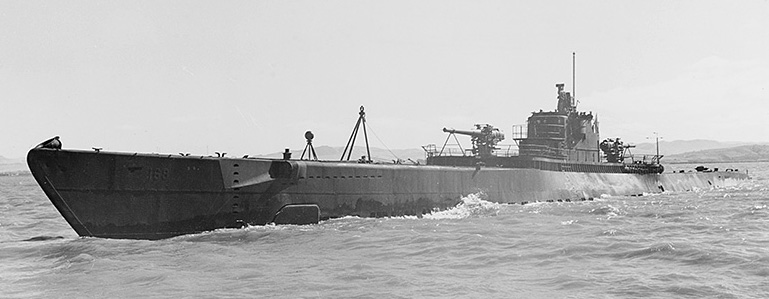
Development
The V-5 and V-6, Narwhal and Nautilus were part of these “V-Boats” a group of US submarines that pioneered the rebirth of the United States Navy submarine arm in the interwar, leading ultimately to the WW2 mass-built Gatao, Tench and Balao classes. The V-Boats were a serie of single, pairs or trios of largely experimental submarines that tested all possible configrations, notably in propulsion. This process went on from 1921 to 1934. Only from there, largeer “serial” classes started to be delivered, notably the Porpoise, Shark pairs and the Perch, Salmon, Sargo, Tambor classes. After this, 236 of the superclass Gato were built. Until the end of 2024, all will be covered.
The V Boats comprised the V-1 to V-9. Early boats were cruisers: The Barracuda trio, USS Argonaut, and the Narwhal class. Later medium boats were tested, USS Dolphin and the Cachalot class.
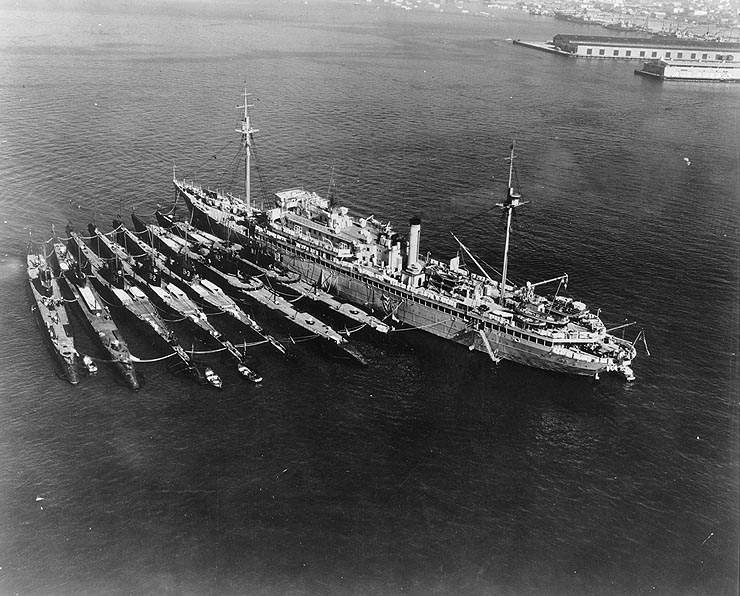
USS Holland and the seven V class subs in San Diego, 1934
In their overall appearance and dimensions, V-5 (Narwhal) and V-6 (Nautilus) were a lot closer than USS Argonaut than the earlier Barracuda class. They were a true attempt to creat the US Navy version of the German 1918 “U-Kreuzer”, massive 4000t boats armed with 6-inches deck guns and with exceptional range. They were essentially long-range submarine commerce raiders. They were mostly based on the study of the Type U-139 and Type U-151 U-boat classes obtained as war reparation. They needed to keep Endurance as well as sea-keeping capabilities high, as well as the number of torpedoes aboard for prolongated campaigns. To spare these, two large deck guns. There was of course a cost to pay, and this was to renounced to high speed oth surfaced and underwater as well as agility or maximum diving capability.
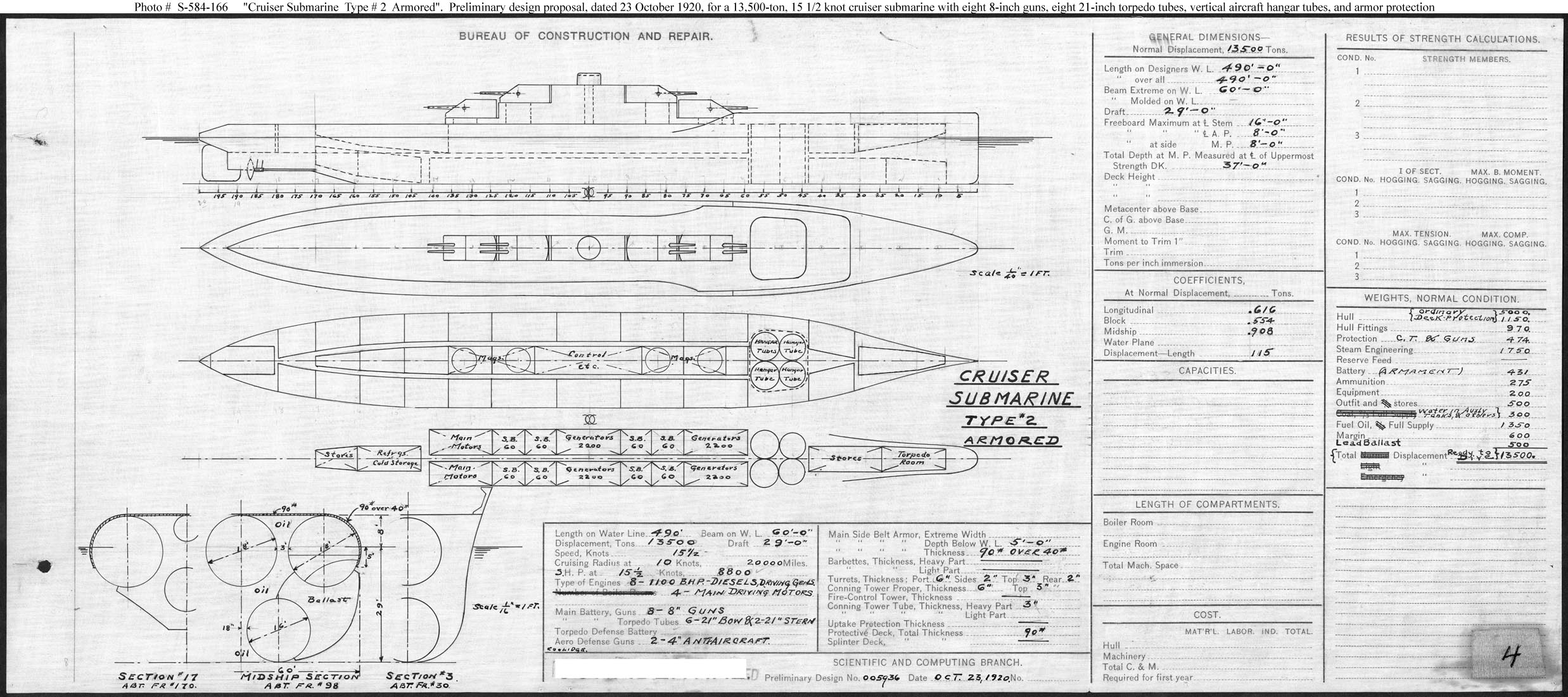
Dated from 23 October 1920, so before the Washington treaty, BuC&R was tasked to look at a radical, 13,500 tonnes, 490 feet or 150 m cruiser submarine, 60 feet or 18 meters (normal displacement, not even submerged…) cruiser submarine. It was combining four twin turret with heavy guns (8 inches of 203 mm), the same as heavy cruisers concretized with the Pensacola class later. The “Cruiser Submarine Type #2” was a preliminary study and design proposal that also included four small hangar tubes for folded seaplanes. The idea was to cover beyond the horizon in all four directions. From there, nothing followed as the post-Washington treaty called for more reasonable designs.
Originally the design even planned for a small scouting seaplane similar to British experiments with the M1 class in 1918. The latter was to be carried in a water-tight hangar, abaft the conning tower. Experiments with seaplanes were done with a prototype hangar installation on USS S-1 (SS-105) by the mid-1920s but it was eventually concluded that the increase in scouting capability was not balaced enough by the drawbacks of having almost an hour to deploy and operate the aircraft plus compromises in the aircraft itself, reducing its overall efficiency. UK, France and Japan all tested this capability but only the latter persisted in this type.
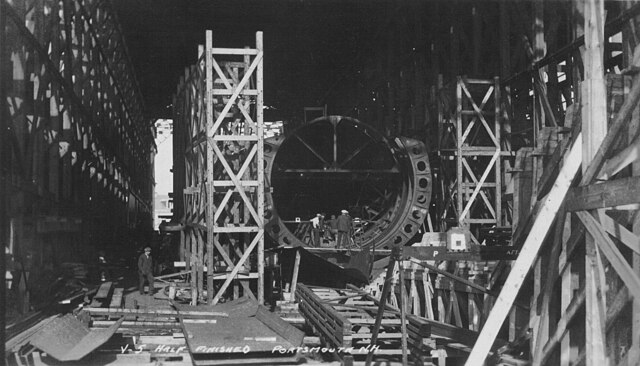
V-5 was designed as a smaller variant of the preceding submarine minelayer V-4 (Argonaut) and witrhout that capability. They were the result of a strategic concept planning for a naval war with Japan in the far western Pacific and largely framed by the 1922 Washington Naval Treaty, whiche placed no limits for long-range submarine “cruisers”. The naval staff also called the “strategic scouts”. The powerplant was supposed to keep them underway as long as possible, procuring an exceptional endurance but not high speed. Influence by the German “U-cruisers” led to design even larger submarines, with better seaworthiness, and this time both received a raised gun platform around conning tower. There was in it, extra deck stowage for spare torpedoes under this platform and in the superstructure, way above the pressure hull.
On the powerplant, V-5 and V-6 were initially designed large MAN-designed diesel engines and not Busch-Sulzer engines used until then, causing so much troubles. The MAN engines were ordered to the company in Germany but they proved a failure. These specially built engines, much larger than previous diesels used by the “U-Kreuzer” failed to reach contracted power. They were capricious, even finnicky, vibrating much, and had dangerous crankcase explosions. In 1942 the USN insteads of having the large, unique boats, scrapped, choose to have them gutted in drydock and the whole powerplant replaced (see later). They were ordered respectively to Portsmouth Naval shipyard on the East coast, and Mare Island on the West Coast in 1927.
Design of the class
blueprint
Hull and general design
The two double-hulled boats displaced 2,730 long tons (2,774 t) on the surface and 3,900 long tons (3,963 t) submerged on a length of 370 ft (110 m). They displayed prominent “surface-ship” characteristics, notably high freeboard and an expansive deck structure.
Powerplant
Each was powered by two 10-cylinder, two-stroke, 2,350 hp (1,750 kW) MAN diesel engines (designed by the German firm that built engines that powered many German U-boats of World War I, the rights to which the U.S. Navy purchased to build domestically for their own submarines). They also had a pair of smaller 450 hp (340 kW) diesel-powered generators for charging batteries or augmenting the main propulsion engines on the surface. On trials, the two boats achieved nearly 17.5 knots (20.1 mph; 32.4 km/h) surfaced and 8 knots (9.2 mph; 15 km/h) submerged. Their claimed endurance was 18,000 mi (16,000 nmi; 29,000 km) at 10 knots (12 mph; 19 km/h) based on 732 tons of diesel oil.
Original engine specifications called for two US Bureau of Engineering built engines dersigned on specifications by MAN in postwar germany. They were direct-drive, ten-cylinder 4-cycle main diesel engines. They were true beasts of diesels for the time (1928) and developed 2,350 hp (1,750 kW) each. They were assorted to two more BuEng MAN four-cycle 6-cylinder auxiliary diesel engines rated for 450 hp (340 kW) each. They in turn drove 300 kW (400 hp) electric generators. These auxiliary engines were designed for charging batteries only, but can be coupled to a common camshaft transmission to increase surface speed with the main electric motors acting as intermediates.
When rebuilt in 1940-41 their excecrable powerplant was replaced by more powerful Fairbank-Morse diesel-generators (6000 h.p.).
Armament
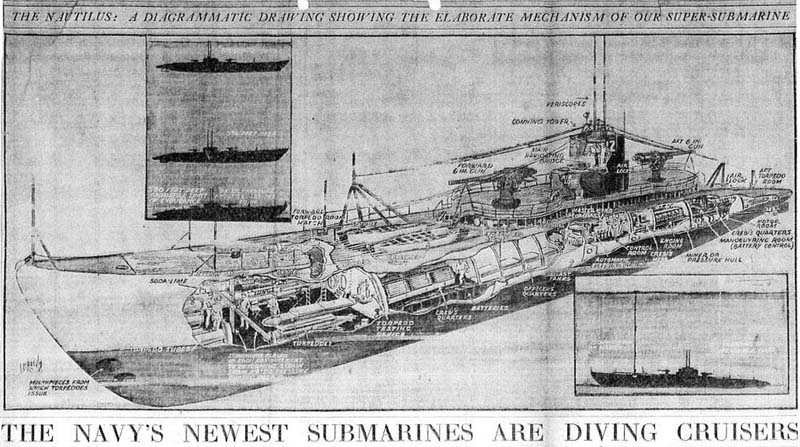
Unlike USS Argonaut, they had six torpedo tubes, all in the bow. They were arranged like the former Argonaut, but the mine tubes aft were now replaced by standard torpedo tubes.
This was for four forward torpedo tubes like n USS Argonaut, and two aft tubes for a grand total of 24 torpedoes, with eight located in the outer hull, below the platform, so external and the remainder inside the pressure hull. There were hatch type funnels allowing to winch up, and then crank along chains thes espare torpedoes inside the forward torpedo room. In addition they also carried two 6-inch (152 mm)/53 caliber deck guns, which were the largest ever mounted on U.S. submarines, also shared by USS Argeonaut.
6-inch (152 mm)/53 Mk XII deck guns
Both were completed with two 6 inch (152 mm)/53 caliber Mark XII Mod 2 wet type deck guns, which were far less ambitious that the turret guns, up to triple turrets in 1920 designs. At least this solution was based on solid foundations, albeit the shells were still too heavy to manually handle. They were confidential ordnances only used, apart the three late V subs, by the Omaha-class cruisers. The guns existed in the Mk 12, Mk 14, Mk 15, Mk 18 in mountings Mk 13, Mk 16, Mk 17.
This type also was shared by the Omaha (CL-4), South Dakota (BB-49), Lexington (CC-1) classes.
⚙ specifications 6-in/53 Mk 12
Weight: 10.11 tons (10.27 mt)
Barrel lenght: 26.5 feet (8 m) bore (53 calibers)
Elevation/Traverse: +0, +25°, 300°
Loading system: Welin breech block and Smith-Asbury mechanism
Muzzle velocity: 900 meters per second (2,950 ft/s)
Range: 23,300 yd (21,310 m)
Crew: 8
Round: 152 millimeters (6 in); 105 pounds (48 kg)
Rate of Fire: 2-3 rpm
21-inches Mark 10
These 21″ (53.3 cm) Mark 10 was a 1917 design entering service in 1918 and evolving into the the Mod 3 in 1927. They were the last torpedo designed by Bliss, manufactured by the Naval Torpedo Station at Newport and they saw action in World War II, notably on the numerous WWI S-class boats as well as the V series.
⚙ specifications Mark 10 Mod 3
Weight: 2,215 lbs. (1,005 kg)
Dimensions: 183 in (4.953 m)
Propulsion: Wet-heater
Range/speed setting: 3,500 yards (3,200 m) / 36 knots
Warhead: 497 lbs. (225 kg) TNT or 485 lbs. (220 kg) Torpex
Guidance: Mark 13 Mod 1 gyro
Before 1941 they had been likely re-equipped with the infamous Mark 14, entering service in 1930. Developed as a replacement for the Mark 10, they became the interwar and early WW2 standard of the USN for submarines. Modified versions were still in storage until the 1970s and they rarely used their 31 knot setting.
It shoukd be noted that the stern tubes were eliminated in 1940-41 and like USS Argonaut they were down to their four bow tubes.
⚙ specifications Mark 14 TORPEDO |
|
| Weight | Mod 0: 3,000 lbs. (1,361 kg), Mod 3: 3,061 lbs. (1,388 kg) |
| Dimensions | 20 ft 6 in (6.248 m) |
| Propulsion | Wet-heater steam turbine |
| Range/speed setting | 4,500 yards (4,100 m)/46 knots, 9,000 yards (8,200 m)/31 knots or 30.5 knots |
| Warhead | Mod 0: 507 lbs. (230 kg) TNT, Mod 3: 668 lbs. (303 kg) TPX |
| Max depth | Low |
| Guidance | Mark 12 Mod 3 gyro |
They also carried from the start at the rear of their large conning tower, two pintle mounted, lequid-cooled 12.7/90 heavy machine guns to deal with aircraft. By 1940 standards this was woefully inadequate and in their 1942-43 refits, they received two 20mm/70 Mk 4 Oerlikon guns in single mounts, fore and aft of the conning tower, placed on bandstands.
Sensors
They had the basic hydroacoustic suite of 1920 US submersibles when completed and gained in 1930 the JK sonar. In 1940-41 when refitted however, they received, for Narwhal, a QCH sonarand for nautilus, a QCD sonar. Later in 1942-43 in addition to armament changes (see later), they received a modified conning tower featuring the SD and SJ radars.
KJ Sonar: (Data to come)
QCH Sonar: (Data to come)
QCD Sonar: (Data to come)
SD Radar: (Data to come)
SJ Radar: (Data to come)
⚙ Narwhal class specifications |
|
| Displacement | 2,730 long tons surfaced(standard), 3,900 tons submerged |
| Dimensions | 349 ft x 33 ft 3+1⁄4 in x 16 ft 11+1⁄4 in (106 x 10.141 x 5.163 m) |
| Propulsion | 2× BuEng/MAN-designed direct-drive main diesel engines 2,350 hp, 2× BuEng MAN 400 hp aux. generators, 2× 120-cell Exide ULS37 bat., 2 × Westinghouse EM 800 hp (600 kW) |
| Propulsion after refit | 4× GM Winton M16-278A 16-cyl.diesel-electric 1,600 hp, 2 × GM Winton 8-268A auxi. generators 400 hp, 2 × 120-cell Exide UHS39B bat., 2× Westinghouse EM 1,270 hp (950 kW) with Fairbanks-Morse reduction gears. |
| Speed | 17.4 knots (32.2 km/h) surfaced, 8 knots (15 km/h) submerged |
| Range | 9,380 nautical miles (17,370 km) at 10 knots (19 km/h) |
| Armament | 6 × 21-in TTs 24-26 internal, 4 external tubes, 2×6-in/53 Mark 12 Mod. 2 deck guns, 2x 0.5 in HMG. |
| Armament after refit | Same but 2 ext. bow and stern tubes, 16 torps., 2x 20mm/70 Mk 4 AA |
| Sensors | KJ sonar, see notes |
| Test depth | 300 ft (90 m) |
| Crew | 9+10+70, later 9+88 |
Construction and evaluation
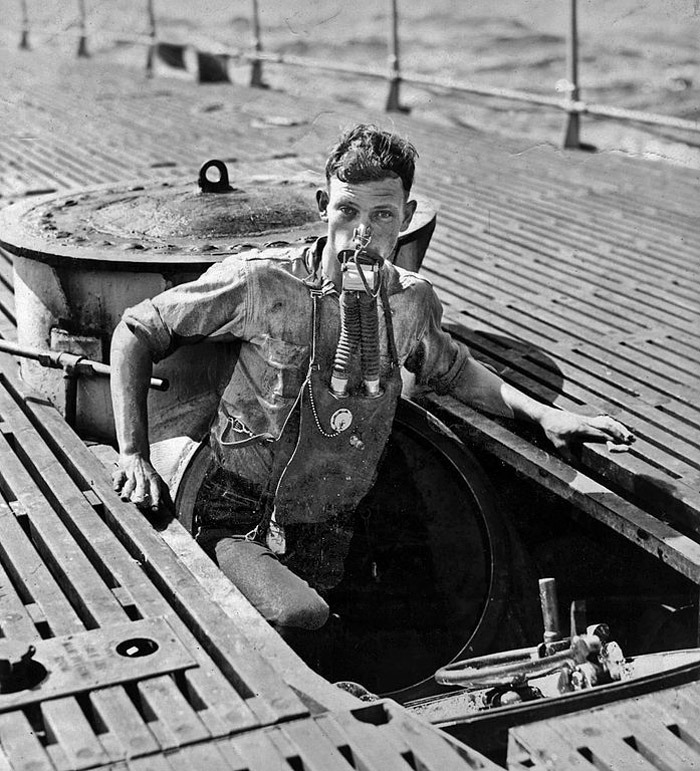
Momsen lung, tested on USS Narwhal, in use during training – USS V-5 (SC 1) crewman A. L. Rosenkotter exits the submarine’s escape hatch wearing the “Momsen Lung” emergency escape breathing device during the submarine’s sea trials in July 1930. The emergency breathing device was named for its inventor, U.S. Navy submarine rescue pioneer Cdr. Charles “Swede” Momsen. The submarine V-5 was later renamed USS Narwhal (SS 167).
V5 was laid down on 10 May 1927, launched at Portsmouth Naval Shipyard, Kittery, Maine, on 17 December 1928, and commissioned on 15 May 1930. She was soon renamed HMS Narwhal, and her final pennant was SS-167. Her sister V6 was Laid down on 2 August 1927, launched at Mare Island Naval Shipyard on 15 March 1930 and commissioned on 1 July 1930. She was renamed USS Nautilus and attributed the SS-168 hull number. Their core utility was to test an alternative powerplant after the issues encountered by USS Argonaut and the Barracuda class.
V-5 and V-6 were an extrapolation of German submarine cruisers, but they ended as too large and unwieldy in operation, as soon as trials and dives multiplied. In 1939 they were reassessed and the picture was rather dark. They were found slow to dive and hard to maneuver, and between their noise, size, low depth and bubble trail, easy to detect. Narwhal and Nautilus however had very large internal spaces and thus they were presented before war started with Japan to carry up to 20,000 US gal (76,000 L) of aviation gasoline, as mobile seaplane tenders at sea. In 1940 their captoviou engine needed renewal and this was done, with four 1,600 hp (1,200 kW) General Motors diesels adopted. They also had four additional external torpedo tubes, two in the bow and two in stern the stern to add to their initial launche= and multiply hitting chances. Despite thei age they would be very successful in WW2, perhaps because the chosen captains they had knew they were spoecial and what they were capable of.
Narwhal completed 15 successful war patrols, Nautilus 14 earning a battle star for each one, sinking 13 enemy ships between them, 35,000 tons, but also countless near misses. They were found, like USS Argonaut, perfect to carry troops and goods troops on covert missions, notably at Guam and in the Philippines. Nautilus and Argonaut notably carried Carlson’s Raiders to Makin Atoll. Narwhal, landed the US Army’s Alaskan Scouts on Attu, Aleutian Islands well before the main landing by May 1943. They ran until 1945 practically only that kind of clandestine missins, landing and rerieving agents and operatives behind enemy lines, especially prior to the campaign of the Philippines. Narwhal and Nautilus were withdrawn by April and June 1945 and sold but Narwhal had her main guns saved and ending into a memorial at New London, submarine base in Connecticut.
Career of the Narwhal class
 USS Narwhal, V6, S-167
USS Narwhal, V6, S-167

V-5 started her service in Annapolis, Maryland. On 11 August 1930 she made a first training cruise to the West Indies and back to homeport Portsmouth on 11 September for fixes. She trained off New England until 31 January 1931, then was transferred to the Pacific via Panama, so San Diego on 4 April. On 19 February she was renamed USS Narwhal and on 1st, the hull number SS-167. Thi s was followed by an early overhaul at Mare Island after which she departed in February 1932 for Hawaii and back to to San Diego on 17 March. On 12 July 1934 she trained with SubDiv 12 and for three years she stayed on the coast, north to Seattle, Washington and west to Pearl Harbor, homeport by 1941. In between she had an short overhaul. After a last training cruise, her riveted tanks started to leak badly and she lost some 20,000 gallons of fuel oil. She needed repairs.
On 7 December 1941 she was witness to the first explosions on Ford Island and her gunners jumped into claiming to assist in downing two torpedo planes.
Her first patrol started on 2 February to 28 March 1942 under Lt Cdr “Weary” Wilkins to Wake Island (15–16 February,) and Ryukyu Islands, trying to monitor IJN moves. On 28 February she spotted, tracked and fired at Maju Maru, sank. Six days later she did the same with Taki Maru, East China Sea.
Her second war patrol was from 28 May to 13 June, in defense of Midway and working with TF 16 (Enterprise, Hornet, Yorktown). She joined USS Plunger and Trigger, scouting east of Midway. They were passive during the battle.
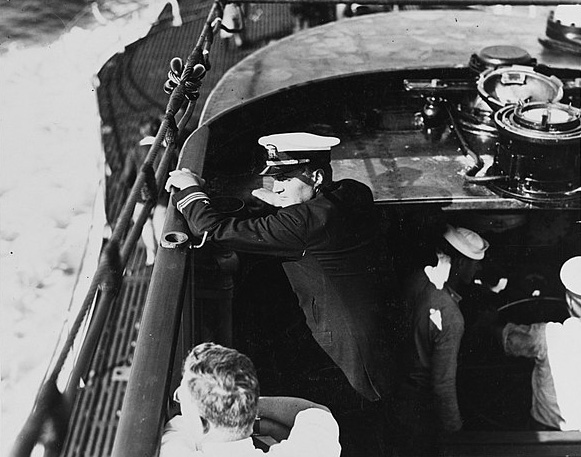
Her third patrol (7 July – 26 August) brought her north of the Japan home Island, Hokkaidō, trying to prey on shios bound to the Kurile Islands. She claimed two freighters on 24 and 28 July. On 1 August, she claimed Meiwa Maru and possibly the tanker Koan Maru. Seven days later, this was Bifuku Maru. On 14 August she spotted at preiscope depth three enemy destroyers crossing her stern and was discovered and depth charged but was slightly damaged.
On 8 September, she returned home, Mare Island for overhaul, notably in her machinery, four external torpedo tubes, more torpedo deck stowage, a modernized CT and 20 mm AA guns. She departed on 4 April 1943 to embark the 7th Infantry Division Provisional Scout Battalion with Alaskan Natives to land them on Attu Island, sailing on 18 April, hitting Dutch Harbor on the 27th.
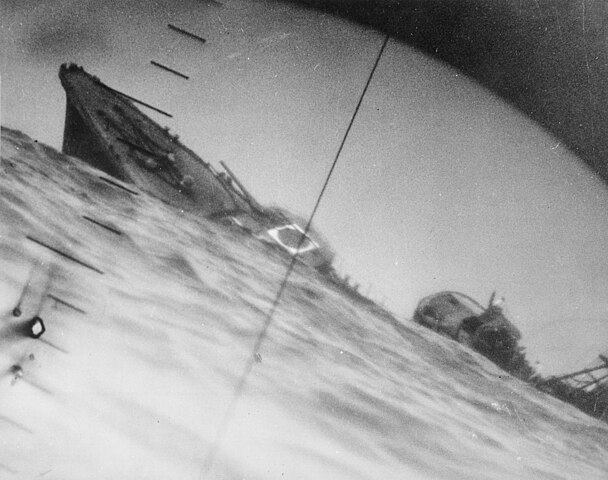
Her fourth war patrol (30 April to 25 May) was from Dutch Harbor to the western Aleutian Islands, meeting Nautilus on 11 May off Attu, both landing Army Scouts in rubber boats to prepare for the recapture of the island. She sailed back to Pearl Harbor with Dutch Harbor on 14-18 May. She started her 5th patrol under Frank D. Latta, sailing for the Kurile Islands (26 June – 7 August), trying to create a diversion, bombarding an air base on Matsuwa. Later she met USS Lapon, Permit, and Plunger just coming from the Sea of Japan. On, the night of 15 July, she was fired at, allowing the other submarines to slipp through Etorofu Strait. Her sixth patrol (31 August to 2 October) was off the Marshall Islands where on 11 September, she sank Hokusho Maru, depth charged by her escort but escaped for the Kwajalein Atoll area and from there, Brisbane. RThere she was brief on how to help the Filipino guerrilla. She became the leading submarine for this operations, making nine of these.
The first time she embarked 92 short tons of ammunition and stores, ten operative in her sth patrol (23 October – 22 November). While in the Sulu Sea, off Mindanao on 10-11 November she was spotted by two Japanese ships astern, was fired at but made a dive and escape. She entered Ptiluan Bay and disembark her cargo, making for Nasipit (Mindanao) to unload the rest on 15 November and embarked 32 evacuees including eight women, two children and a baby for Australia. Her 8th war patrol started on 25 November and ended on 18 December with cargo and 11 Army for Cabadbaran and Majacalar Bay, Negros Island on 3 December; embarking nine. At sunrise she spotted and sank sank Hinteno Maru with her deck guns; On 11 December arrived at Port Darwin, then Fremantle.
Her 9th patrol (18 January to 15 February 1944) she arrived off Naso Point (Panay) and Pandan Bay to unload, then Negros Island on 7 February and taking 36 evacuees for Darwin.
Her 10th war patrol (16 February – 20 March) brought her to Butuan Bay and Tawi-Tawi. She torpedoed but did not sank Karatsu (ex USS Luzon) but escaped, depth charged. After her second landing she escaped rhree Japanese destroyers and gathered 38 passengers in Chinampa for Fremantle.
Under Cdr Jack C. Titus she made her 11th war patrol (7 May – 9 June) at Alusan Bay, Samar and then again on the southwest coast of Mindanao.
Her 12th war patrol (10 June – 7 July) saw more action. On 13 June off Bula, Ceram Island she fired att and burnt a Japanese fuel depot with 56 rounds, aloso destroying a power house and pumping station before retreating under fire. After unloading men and cargo and taking on 14 evacuees she was chased off by a submarine chaser. The following day she gunned a Japanese motorized sailboat and on 22 June the tanker Itsukushima Maru.
Her 13th war patrol (12 August–10 September) brought her in Dibut Bay, east coast of Luzon to land her shore party (Major Robert Lapham and, Lt.Cdr Charles “Chick” Parsons) and another at the mouth of the Masanga River, plus taking 4 evacuees. Her 14th patrol (14 September–5 October) saw a landing at Cebu Island and receving 31 fleeing POWs at Siari Bay. She also sank two Japanese transports off Sindagan Point (7 September) and up to 82 POW from Shin’yō Maru plus 31 at Siari for another witness. She avoided antisubmarine patrol plane but her stern planes jammed at a 20° down-angle and she had to blow her main ballast tank, reveringd direction, popping out stern first. The patrol plane started to attack when she was able to dive again.
She had a quick refit at Mios Woendi (Dutch New Guinea) before her 15th and last war patrol (11 October–2 Novembe) under William G. Holman, later mistook by a PBY Catalina. After being identified the latter signaled “GOOD LUCK NARWHAL.” On 17 October she was off Tawi Tawi beach, unloading cargo, cargo and the rest plus 37 men at Negros Island, taking 26 refugee to Brisbane.
She departed Brisbane on 6 January 1945 for the east coast viae Panama and entered the Philadelphia Navy Yard on 21 February, pretty much worn out, to be decommissioned on 23 Apri, stricken on 19 May and sold for scrap. She was awarded 15 battle stars for her service gained in the Asiatic-Pacific Campaign (medal), US efence service medal and WW2 victoy medal.
 USS Nautilus, V7, S-168
USS Nautilus, V7, S-168

V-6 started training off New London until March 1931. Renamed Nautilus on 19 February, SS-168 on 1 July she was ordered to Pearl Harbor and became flagship of SubDiv 12, then SubDiv 13 at San Diego between 1935 and 1938, then Pearl Harbor from 1938 to the attack. In July 1941 she was in Mare Island Naval Shipyard for modernization including what Narwhal gained but also new air conditioning and radio sets. She was back at Pearl Harbor on 28 April 1942 and on 24 May under William H. Brockman Jr.
Midway
She started her first war patrol to Midway Island. On 4 June she sighted masts on the horizon and was soon discovered by Japanese planes, strafing her. She escaped by diving under 100 feet (30 m), the stabilized and continue observaiton at presicope depth. Se later spotted the battleship Kirishima, and the cruiser Nagara plus two destroyers but soon she was again sighted from the air and attacked, depth charged. Later she rose to periscope depth and tried to torpedo Kirishima but a Mark 14 misfired and the other missed. At 08:30 she was attacked by a destroyer and had to dive to 150 feet (46 m) and cash in the depth charge attack. At 08:46 she was again at periscope depth spotting Nagara and two destroyers, now out of range until a third one came out through echo ranging. She surfaced again at 09:00, spotting an aircraft carrier was sighted, changing course to close for attack,but chased off by an enemy destroyer at 09:18 attacked.
By 09:55 she surfaced agian but could not spot anything, the Japanese had left. The carrier spotted again a carrier, either Sōryū or Kaga. She launched four torpedoes from 3,000 yards (2,700 m) but being Mark 14s, one failed to run, two ran erratically, the fourth was a dud amidships. She reported flames still but was soon attacked again and had to dive to 300 feet (91 m) and stay low and for a long time. She resurfaced at 16:10 to see the carrier abandoned, burning. At 19:41 she departed the area, having five torpedoes laft and surviving 42 depth charges. Brockman was awarded a Navy Cross.
From 7 June and 9 June, she resupplied at Midway and sailed for the west, Honshū on 20 June, at the northern end of the Tokyo-Marshall supply route. On 22 June she torpedoed and damaged a destroyer in the Sagami Sea, Ōshima and later sank the destroyer Yamakaze, damaged an oil tanker. On 27 June she sank a sampan with gunfore but on 28 June a merchantman under attack reported her and she had the most severet depth charging, forcing her back to Pearl for repairs from 11 July to 7 August.
The Makin Raid

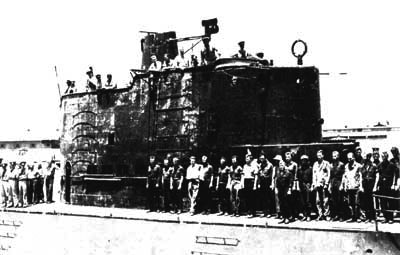 Nautilus departed Pearl for her second war patrol on 8 August with her near sister USS Argonaut and the Second Raider Battalion (LtCol Evans F. Carlson) aboard. She was off Makin Atoll on 16 August for this diversion raid from the landings in Guadalcanal. The Raiders went on Butaritari in rubber boats with outboard motors and she provided gunfire support as enemy positions discovered them at Ukiangong Point. She also sank a troop barge and patrol boat. At 10:39 she was postted by a dive bomber, which attacked. She amde a dive and escaped. Two more attacks followed and the second with 12 planes. The mission was a success and she embarked the withdrawin Marines at 17:00, to land them again at 19:00, but losses this time were heavy. All but nine were later captured and executed. Nautilus and Argonaut sailed for Pearl Harbor and arrived on 25 August.
Nautilus departed Pearl for her second war patrol on 8 August with her near sister USS Argonaut and the Second Raider Battalion (LtCol Evans F. Carlson) aboard. She was off Makin Atoll on 16 August for this diversion raid from the landings in Guadalcanal. The Raiders went on Butaritari in rubber boats with outboard motors and she provided gunfire support as enemy positions discovered them at Ukiangong Point. She also sank a troop barge and patrol boat. At 10:39 she was postted by a dive bomber, which attacked. She amde a dive and escaped. Two more attacks followed and the second with 12 planes. The mission was a success and she embarked the withdrawin Marines at 17:00, to land them again at 19:00, but losses this time were heavy. All but nine were later captured and executed. Nautilus and Argonaut sailed for Pearl Harbor and arrived on 25 August.
Her third war patrol (15 September to 5 November) saw her enforcing a submarine blockade from the Kurile Islands to the Nansei Shoto. She torpedoed and sank three merchant ships, then three sampans by gunfire for 12,000 tons. On 12 October she was heavy depth charged and left an oil slick in her wake, aggravated from 19 October, and next day, air leaks were discovered. Still, she concluded her on 24 October, sinking Kenun Maru and repaired at Midway from 31 October, then Pearl Harbor.
Her fourth patrol was in the Solomon Islands (13 December 1942 to on 4 February 1943) and she rescued rescued 29 from Teop Harbor, 31 December and 1 January, sinking later the Yosinogawa Maru and damaged a tanker, freighter and a destroyer in more attacks. On 4 February she was in Brisbane to land her passengers, then headed for Pearl Harbor making it on 15 April. On 27 April she had been ordered to Alaska and arrived at Dutch Harbor to train with the 7th Infantry Division Provisional Scout Battalion for landings. She embarked 109 Scouts and arrived at on 11 May, landed them 5 hours before the main assault.
After an Overhaul at Mare Island she departed Pearl on 16 September for her 6th war patrol in the Gilbert Islands, Tarawa, Kuma, Butaritari, Abemama, and Makin, taking intel and panoramic pictures of the coastlines, chart corrections and back on 17 October. This was instrumental for the invasion of Tarawa. She was back there on 18 November for a weather and surf conditions forecast as well as landing hazards and bombardments results. She was mistook in the evening of 19 November by USS Ringgold (DD-500) for an IJN sub and fired at while off Maiana. Her conning tower took a 5-in/38 shell, a dud that still fractrured her main induction valve. She made a crash dive to 310 feet (94 m) and recovered but needed two hours repairs for she later could land a 78-man scouting party (5th Amphibious Reconnaissance Company Marines) on Abemama.
At midnight, 20–21 November, she was just 3,000 yards (2,700 m) off Abemama Atoll isoand, lainfing her passengers. On 22 November she brought fire support on the small IJN garrison, destroying bunkers and killing 14, the other comitting Seppuku; On 26 November the island being secured, it was converted as an air base for the Marshall Islands operations. Cdr William D. Irvin was awarded the Navy Cross. She was back to Pearl Harbor on 4 December. Her 8th war patrol was north of Palau, west of the Marianas from 27 January and on 21 March 1944 she sank the ex-hospital ship America Maru and damaged three cargo ships. On 26 April she deaded for Brisbane, and was prepared for Philippines guerrilla missions and reconnaissance.
Her 9th patrol (29 May to 11 June) saw her landing supplies and men to Colonel R.V. Bowler on Mindanao. On 12-27 June, she did the same to Negros Island, embarked evacuees. Her 11th patrol (30 June to 27 July) saw a landing at North Pandan Island, and to Colonel Kangleon, Leyte, and Colonel Abcede on Mindanao. Her 12th, 13th and 14th patrols were a repeat, at Mindanao and Luzon. On 25 September she grounded on Iuisan Shoal and everybody and everything was sent ashore. Her reserve fuel tanks were blown dry and ballast blown overboard as well as the 6-inch ammunition. After blowing her her main ballast tanks she could get off the reef in few hours.
For her 13th patrol (31 October 1944) she had to gunfire scuttle USS Darter, which ran aground on a reef, after 55 hits.
She ended her 14th, last patrol in Darwin on 30 January 1945 and sailed to Philadelphia, arriving on 25 May for inactivation, decommissioned on 30 June, stricken on 25 July, sold on 16 November.
She was awarded 14 battle stars, just one less than her sister Narhwal, but a Presidential Unit Citation.
Read More/Src
Books
Campbell, John Naval Weapons of World War Two (Naval Institute Press, 1985)
Friedman, Norman “US Submarines through 1945: An Illustrated Design History”, Naval Institute Press
Gardiner, Robert and Chesneau, Roger Conway’s All the World’s Fighting Ships 1922–1946 Conway 1980.
Hinman, Charles R., and Douglas E. Campbell. The Submarine Has No Friends. Syneca Research Group, Inc., 2019.
Johnston, David “No More Heads or Tails: The Adoption of Welding in U.S. Navy Submarines”, The Submarine Review, June 2020
Lenton, H. T. American Submarines (Navies of the Second World War) (Doubleday, 1973)-4
Silverstone, Paul H. U.S. Warships of World War II (Ian Allan, 1965).
Links
navypedia.org narwhal.htm
navy.mil/navydata vclass.htm
navweaps.com/ us torpedoes ww2
navweaps.com 6-in/53 mk12
navsource.org
navsource.org/
http://www.pigboats.com nautilus.html
http://www.pigboats.com narwhal.html
https://pigboats.com/ v-boats3.html
wikipedia.org V-5_and_V-6
USS Narwhal (SS-167)
USS Nautilus (SS-168)
fleetsubmarine.com/sublist.html
washingtonpost.com/ Nautilus exploits
imdb.com/title/tt4892864/
Videos
Model Kits
On scalemates, uss nautilus See also
3D
USS Nautilus SS-168 WW2 Submarine Low Poly Asset by Area1 on Sketchfab

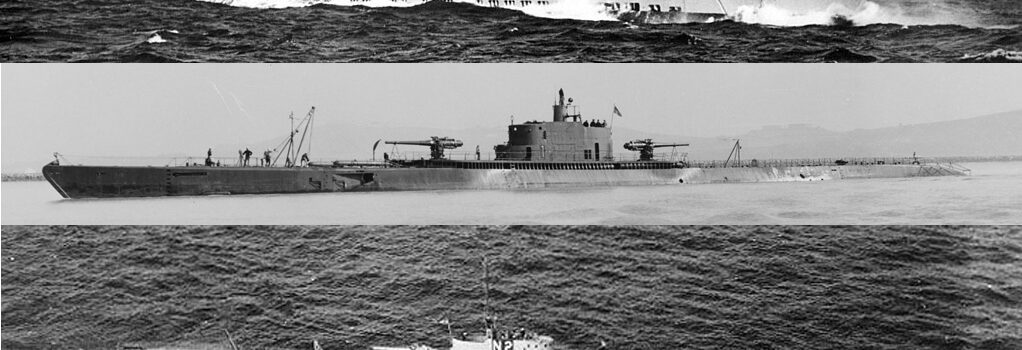
 Latest Facebook Entry -
Latest Facebook Entry -  X(Tweeter) Naval Encyclopedia's deck archive
X(Tweeter) Naval Encyclopedia's deck archive Instagram (@navalencyc)
Instagram (@navalencyc)





 French Navy
French Navy Royal Navy
Royal Navy Russian Navy
Russian Navy Armada Espanola
Armada Espanola Austrian Navy
Austrian Navy K.u.K. Kriegsmarine
K.u.K. Kriegsmarine Dansk Marine
Dansk Marine Nautiko Hellenon
Nautiko Hellenon Koninklije Marine 1870
Koninklije Marine 1870 Marinha do Brasil
Marinha do Brasil Osmanlı Donanması
Osmanlı Donanması Marina Do Peru
Marina Do Peru Marinha do Portugal
Marinha do Portugal Regia Marina 1870
Regia Marina 1870 Nihhon Kaigun 1870
Nihhon Kaigun 1870 Preußische Marine 1870
Preußische Marine 1870 Russkiy Flot 1870
Russkiy Flot 1870 Svenska marinen
Svenska marinen Søværnet
Søværnet Union Navy
Union Navy Confederate Navy
Confederate Navy Armada de Argentina
Armada de Argentina Imperial Chinese Navy
Imperial Chinese Navy Marinha do Portugal
Marinha do Portugal Mexico
Mexico Kaiserliche Marine
Kaiserliche Marine 1898 US Navy
1898 US Navy Sovietskiy Flot
Sovietskiy Flot Royal Canadian Navy
Royal Canadian Navy Royal Australian Navy
Royal Australian Navy RNZN Fleet
RNZN Fleet Chinese Navy 1937
Chinese Navy 1937 Kriegsmarine
Kriegsmarine Chilean Navy
Chilean Navy Danish Navy
Danish Navy Finnish Navy
Finnish Navy Hellenic Navy
Hellenic Navy Polish Navy
Polish Navy Romanian Navy
Romanian Navy Turkish Navy
Turkish Navy Royal Yugoslav Navy
Royal Yugoslav Navy Royal Thai Navy
Royal Thai Navy Minor Navies
Minor Navies Albania
Albania Austria
Austria Belgium
Belgium Columbia
Columbia Costa Rica
Costa Rica Cuba
Cuba Czechoslovakia
Czechoslovakia Dominican Republic
Dominican Republic Haiti
Haiti Hungary
Hungary Honduras
Honduras Estonia
Estonia Iceland
Iceland Eire
Eire Equador
Equador Iran
Iran Iraq
Iraq Latvia
Latvia Liberia
Liberia Lithuania
Lithuania Mandchukuo
Mandchukuo Morocco
Morocco Nicaragua
Nicaragua Persia
Persia San Salvador
San Salvador Sarawak
Sarawak Uruguay
Uruguay Venezuela
Venezuela Zanzibar
Zanzibar Warsaw Pact Navies
Warsaw Pact Navies Bulgaria
Bulgaria Hungary
Hungary

 Bundesmarine
Bundesmarine Dutch Navy
Dutch Navy Hellenic Navy
Hellenic Navy Marina Militare
Marina Militare Yugoslav Navy
Yugoslav Navy Chinese Navy
Chinese Navy Indian Navy
Indian Navy Indonesian Navy
Indonesian Navy JMSDF
JMSDF North Korean Navy
North Korean Navy Pakistani Navy
Pakistani Navy Philippines Navy
Philippines Navy ROKN
ROKN Rep. of Singapore Navy
Rep. of Singapore Navy Taiwanese Navy
Taiwanese Navy IDF Navy
IDF Navy Saudi Navy
Saudi Navy Royal New Zealand Navy
Royal New Zealand Navy Egyptian Navy
Egyptian Navy South African Navy
South African Navy






























 Ukrainian Navy
Ukrainian Navy dbodesign
dbodesign